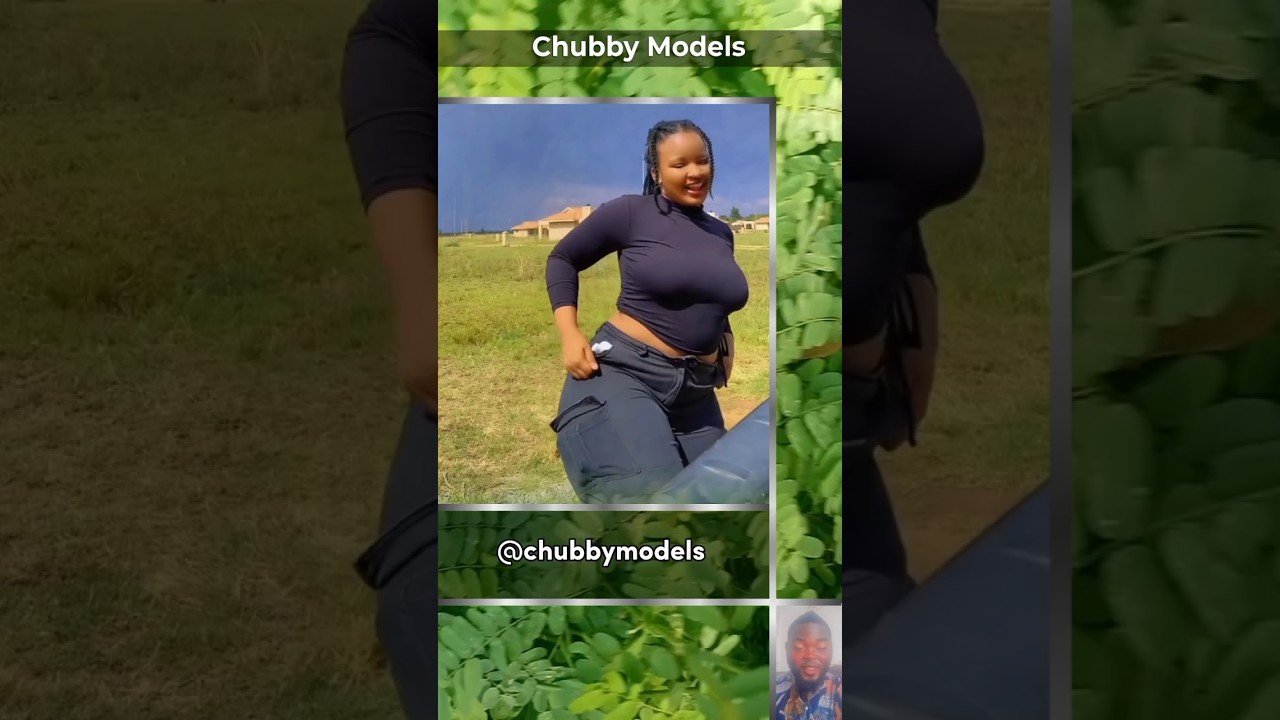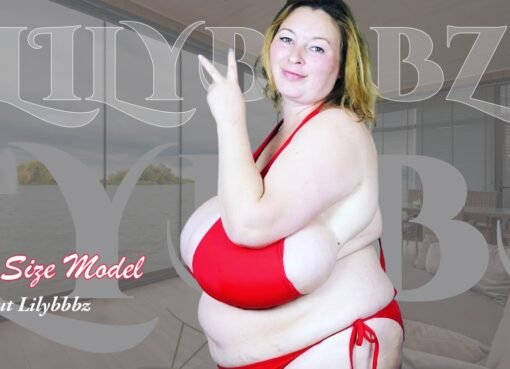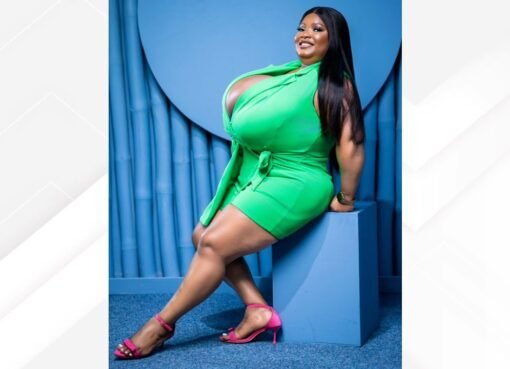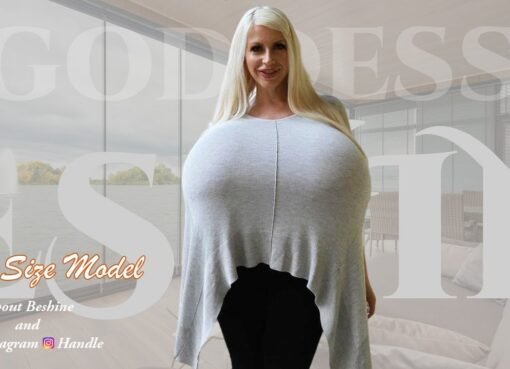#plussize #model #fashion #curvy #modeling #love #beauty #chubbymodels #instamodel #topmodel

You’re about to embark on a delightful journey through the vibrant world of plus-size fashion modeling. This is a space where beauty knows no bounds, and where confidence and love for one’s own body are celebrated with every pose and picture. You’ll find yourself inspired by the diverse beauty and bold fashion choices that define this empowering community.
Get ready to explore how curvy models are redefining the fashion industry, embracing their natural beauty and showcasing stunning designs that fit every figure. With Chubby Models leading the way, these influential figures are shining brightly on social platforms, proving that beauty truly comes in all shapes and sizes. It’s a celebration of love, empowerment, and the undeniable allure of the curvy world.
The Evolving Landscape of Fashion
In the ever-changing world of fashion, one of the most significant shifts has been the industry’s growing embrace of diversity, particularly in terms of body size and shape. This shift is reflected in the increasing visibility and inclusion of plus-size models on runways, in magazines, and across advertising campaigns. Fashion, which once prized a narrow vision of beauty, is slowly but surely expanding its horizons.
How Fashion Has Evolved to Include Plus-Size Models
The inclusion of plus-size models in the fashion industry is not just a passing trend but a significant evolution. Once sidelined and overlooked, plus-size models are now being celebrated and represented in a variety of fashion campaigns. This change has been driven by a combination of consumer demand and greater awareness within the industry about the need for inclusivity. Where once fashion runways and magazine covers were reserved exclusively for those who conformed to a slender ideal, now a more diverse representation is increasingly the norm. Plus-size models showcase garments that are bold, fashionable, and made to fit a wider variety of body types, offering a fresh perspective on what it means to be beautiful.
The Role of Social Media in Changing Perceptions
Social media has played a critical role in shifting perceptions of body image and beauty standards. Platforms like Instagram and TikTok have enabled plus-size models to reach audiences that were previously inaccessible. These platforms provide an open space for individuals to express themselves outside the traditional confines of fashion, challenging outdated stereotypes and celebrating a broader range of beauty. This democratization of fashion has allowed plus-size models to connect with fans on a personal level and share their stories in powerful ways that resonate with many.
Influence of Public Demand for Diversity in Modeling
Public demand for diversity has been a catalyst for change within the fashion industry. Consumers, fed up with one-dimensional portrayals of beauty, have actively voiced their desire for more inclusive representation. This grassroots movement has compelled brands to rethink their casting decisions and marketing strategies. As consumers become increasingly vocal about their wants and values, the industry has been forced to adapt, showcasing models who reflect the diverse world in which we live. The result is a fashion landscape that is richer, more vibrant, and much more inclusive.
Defining Plus-Size Modeling
The terms we use can often confuse, particularly in an industry known for its precise measurements and standards. Understanding what constitutes plus-size modeling is essential in deciphering the roles these models play and the impact they have.
What Constitutes Plus-Size in the Modeling Industry
In the modeling industry, “plus-size” is often used to describe models who are larger than the standard sample size, typically a size 2 or 4. For women, plus-size tends to begin at size 12, though this can vary depending on the region and specific fashion brand. Men’s plus-size models also exist, though there is generally less attention paid to them. The designation of “plus-size,” while still evolving, serves to categorize models who showcase clothing designed for larger sizes, working to dismantle the industry’s historic size exclusivity.
Differences Between Plus-Size, Curvy, and Chubby Models
While “plus-size,” “curvy,” and “chubby” are often used interchangeably, they carry distinct meanings. Plus-size refers to a specific industry category based on size. Curvy models are celebrated for their proportional shapes, often highlighted for the way clothing drapes over their rounded lines. “Chubby” is a less formal term, sometimes used humorously or affectionately, but it can also carry negative connotations, depending on the context. Regardless of terminology, each category challenges conventional beauty narratives and champions a more inclusive interpretation of fashion.
Challenges Faced by Plus-Size Models in the Mainstream Industry
Being a plus-size model in the mainstream fashion industry is not without its challenges. Despite growing acceptance, these models still face significant hurdles, including limited availability of clothing samples in their size, fewer runway opportunities, and sometimes discriminatory attitudes within the industry. Plus-size models often have to advocate for themselves and navigate an industry that still favors slimmer physiques. Moreover, the pressure to both embody and challenge societal norms about body image requires resilience and courage.
Impact of Social Media on Plus-Size Models
Social media has been a game-changer for plus-size models, offering a platform to showcase their talent and build communities centered around positivity and acceptance.
The Rise of Instagram and TikTok in Promoting Body Positivity
Instagram and TikTok have notably contributed to the promotion of body positivity. Through these platforms, plus-size models can bypass traditional media gatekeepers and directly reach their audience. By sharing candid photos, behind-the-scenes moments, and engaging with followers on personal topics, these models promote a message of self-acceptance and diversity. Platforms that thrive on visual content allow these models to use their images and stories as a source of empowerment and inspiration.
How Plus-Size Models Use Social Media Platforms to Gain Popularity
Plus-size models leverage social media to build their personal brands and gain popularity. Through engaging content, including styling tips, modeling advice, and personal anecdotes, they create relatable narratives that resonate with a broad audience. Collaborations with influencers and brands also help boost their visibility. By creating an authentic online presence, these models can cultivate a supportive community and make significant strides in the fashion industry.
The Role of Influencers in Promoting Curvy Beauty
Influencers play a crucial role in promoting curvy beauty and challenging traditional beauty standards. Many plus-size models themselves have become influencers, using their platforms to publish content that celebrates diversity and empowers their followers to embrace their bodies. They act as role models, shifting perceptions and inspiring others to break free from conventional beauty ideals. The influence and reach of these individuals are instrumental in reshaping societal attitudes toward body size and acceptance.

This image is property of i.ytimg.com.
Fashion Brands Embracing Curvy Models
The fashion industry’s shift toward inclusivity is evident in the increasing number of brands that are beginning to feature curvy models in their campaigns.
Notable Fashion Brands That Feature Plus-Size Models
Several fashion brands have emerged as leaders in embracing plus-size models. Brands like ASOS, Savage X Fenty, and Torrid are known for their inclusive sizing and commitment to diversity. They use plus-size models in their advertising campaigns, breaking the mold and setting a precedent for others to follow. High-fashion houses like Dolce & Gabbana and Christian Siriano have also made strides by featuring plus-size models in their runway shows, further normalizing diverse representation.
The Business Impact of Including Plus-Size Models in Advertising
Including plus-size models in advertising has proven to be a savvy business move. It aligns brands with modern values of inclusivity and diversity, broadening their appeal and reaching a wider consumer base. Furthermore, when consumers see themselves represented in fashion, they are more likely to engage with the brand and make purchases. By embracing body diversity, brands not only enhance their image but also see tangible benefits in terms of customer loyalty and sales.
Consumer Response to Curvy Models in Marketing Campaigns
Consumer response to including curvy models in marketing campaigns has been overwhelmingly positive. Many consumers appreciate seeing themselves—or a more realistic portrayal of humanity—reflected in advertisements. This movement toward authenticity resonates deeply with an audience that increasingly values inclusivity and representation. Plus-size models help foster a sense of belonging and acceptance, encouraging consumers to support brands that align with these values.
Challenges Faced by Plus-Size Models
Despite progress, plus-size models still encounter numerous challenges within the fashion industry.
Discrimination and Stigma Within the Fashion Industry
Discrimination and stigma remain significant hurdles for plus-size models. Fashion is still dominated by certain ideals and often marginalizes models who don’t fit the traditional mold. Plus-size models frequently encounter backhanded compliments, exclusion from certain high-profile events, and undue scrutiny regarding their body size. These obstacles highlight the ongoing need for systemic change within the industry to foster a more inclusive environment.
The Struggle for Representation in High Fashion Shows
Representation in high fashion shows remains a daunting challenge. While progress has been made, many high-profile runways still predominantly feature models of a certain size and shape, providing limited opportunities for plus-size individuals. Breaking into these exclusive spaces requires persistence and determination, as well as industry-wide recognition of the value that diversity brings to fashion.
Overcoming Body Image Issues and Promoting Self-Love
Plus-size models are often advocates for body positivity, yet they, too, deal with personal body image issues. Living in the public eye can exacerbate these struggles, as societal pressures and unrealistic standards persist. However, many models utilize their platforms to promote self-love and challenge the cultural narratives that tie self-worth to body size. By sharing their journeys, they inspire others to embrace themselves fully and love their bodies unconditionally.
The Role of Plus-Size Models in Redefining Beauty Standards
Plus-size models are instrumental in redefining beauty standards, challenging established norms, and advocating for diversity in representation.
Breaking Traditional Beauty Stereotypes
Plus-size models break traditional beauty stereotypes by proving that attractiveness is not confined to one single body type. By celebrating their unique shapes and sizes, they are redefining attitudes towards beauty. These models confront conventional ideas head-on and expand the narrative to include the beauty found in diversity.
How Plus-Size Models Are Empowering Individuals
The presence of plus-size models empowers individuals by validating their experiences and encouraging them to embrace their own beauty. These models not only stand as representations of diverse body types but also as catalysts for change, helping others gain confidence and acceptance. Their perseverance and success serve as a beacon of hope for those who have long felt marginalized.
The Importance of Diversity in Beauty Representation
Diversity in beauty representation is critically important, as it reflects the reality of our multifaceted world. It showcases beauty in all its forms, promoting acceptance and inclusion. Plus-size models are at the forefront of this change, pushing for more inclusive depictions that help dismantle monolithic beauty standards and advocate for a more comprehensive and representative view of the world.
Top Plus-Size Models Making Waves
A number of trailblazing plus-size models are making significant strides within the fashion industry.
Profiles of Leading Plus-Size Models in the Industry
Some leading figures in the plus-size modeling industry include Ashley Graham, Tess Holliday, and Paloma Elsesser. Each of these models has carved a niche for themselves while challenging mainstream norms. Ashley Graham, for instance, has graced covers of top magazines and used her platform to advocate for body positivity, while Tess Holliday’s unapologetic stance on size acceptance has been inspirational for many.
Their Journeys to Success and Overcoming Barriers
The journeys of these models to success are often marked by overcoming significant barriers. Ashley Graham faced numerous rejections and criticisms early in her career but persisted to become one of the most recognized faces in modeling. Tess Holliday defied naysayers by launching a successful career despite existing prejudices, while Paloma Elsesser continues to push boundaries with her unique style and advocacy for inclusivity. Their stories are a testament to the power of resilience and determination.
The Influence These Models Have on Future Generations
By challenging the old guard, these models have a profound influence on future generations. They create a pathway for others to follow and inspire a new wave of models and consumers who value diversity. Their influence extends beyond modeling to impact broader cultural perceptions, setting a positive example for young people to pursue their dreams without limitations.
The Future of Plus-Size Fashion
The future of plus-size fashion looks promising, with growing acceptance and new innovations on the horizon.
Predictions for the Growing Acceptance of Plus-Size Models
Predictions for the fashion industry’s acceptance of plus-size models are optimistic. As more consumers advocate for inclusivity, brands will continue to adapt, leading to greater acceptance and representation. The demand for plus-size fashion is expected to grow, encouraging designers and retailers to invest in making their offerings more comprehensive and inclusive.
Innovations in Plus-Size Fashion Design
Innovations in plus-size fashion design are emerging, with designers recognizing the untapped potential in this market. New techniques and strategies are being employed to create clothing that is both stylish and functional for plus-size individuals. Designers are focusing on fit, comfort, and aesthetics, offering garments that cater to an array of tastes and preferences.
Continued Advocacy for Realistic Body Standards
There will be a continued push for realistic body standards within fashion, led by the advocacy of plus-size models and allies. This advocacy will help maintain and expand the industry’s commitment to authenticity and representation. As societal attitudes toward body image evolve, the fashion industry is poised to reflect and champion this change.
Building a Career as a Plus-Size Model
Aspiring plus-size models face unique challenges and opportunities in establishing their careers in the industry.
Steps to Enter the Plus-Size Modeling Industry
To enter the plus-size modeling industry, aspiring models should start by building a strong portfolio that highlights their unique look and personality. Applying to agencies that specialize in or are known for representing plus-size models is beneficial. Additionally, participating in casting calls and networking within the industry can open doors to opportunities.
The Importance of Self-Promotion and Networking
Self-promotion and networking are vital in the modeling industry, particularly for plus-size models. Building an online presence through social media and engaging with followers is key. Networking with photographers, designers, and other industry professionals can lead to new projects and collaborations that bolster a model’s career.
Balancing Professional Modeling with Personal Identity
Balancing professional modeling with personal identity is an ongoing challenge. Plus-size models often face societal pressure to conform, but maintaining authenticity is crucial. By staying true to themselves, they can navigate the industry with integrity, ensuring that their work aligns with their personal values and mission.
Conclusion: Celebrating Diversity in Fashion
The fashion world continues to evolve, with diversity becoming a cornerstone of its transformation.
The Ongoing Journey Towards Inclusivity in the Fashion World
The journey toward inclusivity in fashion is ongoing and requires persistent effort from all stakeholders. While significant strides have been made, there is still work to be done to ensure that all body types, sizes, and shapes are represented and celebrated. This journey is about more than just fashion; it’s about creating a world where everyone feels seen and valued.
Why Representation Matters Across All Industries
Representation matters across all industries because it is fundamentally about recognizing and valuing diversity. Seeing oneself reflected in media and advertising can have a powerful impact on self-esteem and societal perceptions. It’s a vital component of fostering inclusivity and understanding in a multicultural world.
Encouraging Continued Support for Plus-Size Models in Fashion
Supporting plus-size models in fashion is essential to drive further change. By championing diversity and challenging traditional norms, the industry can continue to evolve in meaningful ways. Continued support will help ensure that the fashion world remains a space where all forms of beauty are acknowledged and celebrated.


